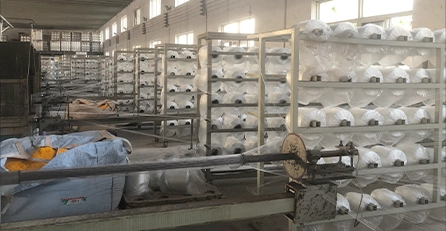Understanding the Importance and Functionality of Vacuum Hoses in Automotive Systems and Maintenance
Understanding Vacuum Hoses A Key Component in Modern Machinery
When it comes to industrial machinery and automotive systems, vacuum hoses play a critical role that is often overlooked. These seemingly simple tubes are essential for creating and maintaining a vacuum in various applications, providing necessary functions from fluid transfer to enhancing engine performance. In this article, we will explore the importance of vacuum hoses, their various applications, and the factors that influence their performance.
What is a Vacuum Hose?
A vacuum hose is a flexible tube designed to transport air or gases in a low-pressure environment. They are typically made from rubber, silicone, or plastic, materials which provide the necessary durability and flexibility. The design and material choice depend on the specific application and operating conditions, such as temperature and chemical exposure.
Applications of Vacuum Hoses
Vacuum hoses find their application in a wide range of industries, including automotive, manufacturing, and healthcare. In the automotive industry, vacuum hoses are vital for the operation of various engine components, such as brake boosters and emission control systems. They facilitate the transfer of air and vapors, ultimately improving engine efficiency and reducing harmful emissions.
In manufacturing, vacuum hoses are utilized in processes like material handling, packaging, and filtration
. For instance, in a factory setting, they might be used to manage dust and debris in production lines or to assist in the lifting of heavy materials using vacuum suction. In the healthcare sector, vacuum hoses are employed in medical devices for suction applications, ensuring cleanliness and safety during procedures.The Importance of Vacuum Hose Maintenance
vacuum hose

Proper maintenance of vacuum hoses is essential for optimal performance. Over time, these hoses can wear out due to exposure to heat, chemicals, or physical abrasion. Signs of wear include cracks, bulges, or leaks, which can lead to reduced efficiency and increased operational costs. Regular inspection and timely replacement of damaged hoses can prevent larger issues and ensure a consistent performance.
Additionally, using the right size and type of vacuum hose for a specific application is crucial. A hose that is too small can restrict airflow and reduce vacuum pressure, while a hose that is too large may lead to inefficiencies or system failure. Understanding the specifications and requirements of your vacuum system is essential when selecting or replacing hoses.
Factors Influencing Performance
Several factors can influence the performance of vacuum hoses. One of these factors is the operating temperature. Different materials have distinct temperature tolerances; thus, selecting a hose that can withstand the specific environmental conditions is crucial for longevity and performance.
Chemical compatibility is another critical consideration. Hoses must be resistant to the substances they will transport to prevent degradation and ensure safety. For instance, using a rubber hose in an application involving strong solvents could lead to premature failure.
Conclusion
In summary, vacuum hoses are a vital yet often unnoticed component of many machines and systems. From automotive engines to industrial vacuum systems, their role in ensuring efficiency and safety cannot be understated. By understanding their applications, maintaining them properly, and choosing the right materials, one can enhance performance and prolong the life of the machinery in which they are installed. As technology advances, vacuum hoses will continue to evolve, playing an indispensable role in diverse fields and industries well into the future.
-
Unrivaled Performance and Applications of PU Pneumatic Hoses and TubesNewsJun.11,2025
-
The Transparent World of Industrial Tubing and Hosing SolutionsNewsJun.11,2025
-
The Intricate World of Pneumatic Conduits: Tubes and HosesNewsJun.11,2025
-
The Dynamic Landscape of Pneumatic Conduits: Unraveling Key ComponentsNewsJun.11,2025
-
The Diverse Applications and Significance of Transparent PVC TubingNewsJun.11,2025
-
High - Pressure Pneumatic Tubing and Systems: An In - Depth LookNewsJun.11,2025














